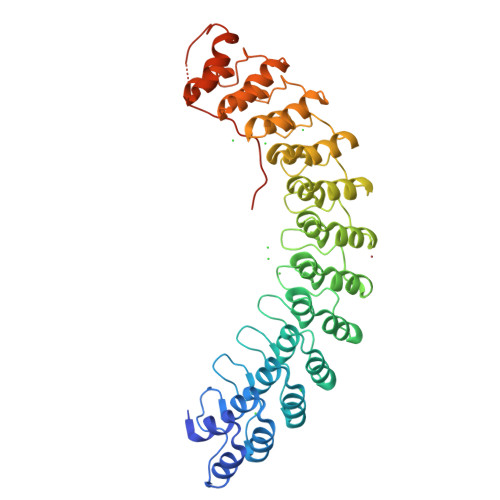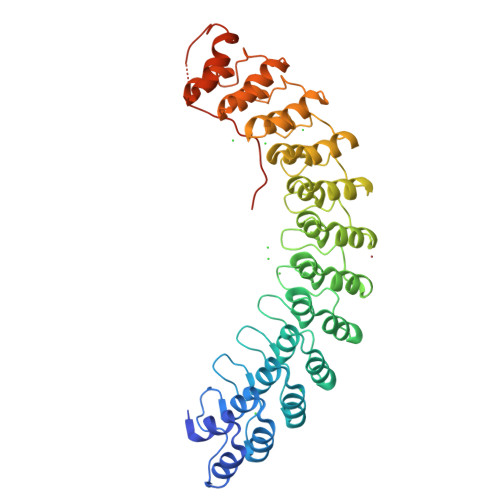Crystal structure of a 12 ANK repeat stack from human ankyrinR
Michaely, P., Tomchick, D.R., Machius, M., Anderson, R.G.W.(2002) EMBO J 21: 6387-6396
- PubMed: 12456646
- DOI: https://doi.org/10.1093/emboj/cdf651
- Primary Citation of Related Structures:
1N11 - PubMed Abstract:
Ankyrins are multifunctional adaptors that link specific proteins to the membrane-associated, spectrin- actin cytoskeleton. The N-terminal, 'membrane-binding' domain of ankyrins contains 24 ANK repeats and mediates most binding activities. Repeats 13-24 are especially active, with known sites of interaction for the Na/K ATPase, Cl/HCO(3) anion exchanger, voltage-gated sodium channel, clathrin heavy chain and L1 family cell adhesion molecules. Here we report the crystal structure of a human ankyrinR construct containing ANK repeats 13-24 and a portion of the spectrin-binding domain. The ANK repeats are observed to form a contiguous spiral stack with which the spectrin-binding domain fragment associates as an extended strand. The structural information has been used to construct models of all 24 repeats of the membrane-binding domain as well as the interactions of the repeats with the Cl/HCO(3) anion exchanger and clathrin. These models, together with available binding studies, suggest that ion transporters such as the anion exchanger associate in a large central cavity formed by the ANK repeat spiral, while clathrin and cell adhesion molecules associate with specific regions outside this cavity.
Organizational Affiliation:
Department of Cell Biology, University of Texas Southwestern Medical Center, Dallas, TX 75235-9039, USA. peter.michaely@utsouthwestern.edu




















